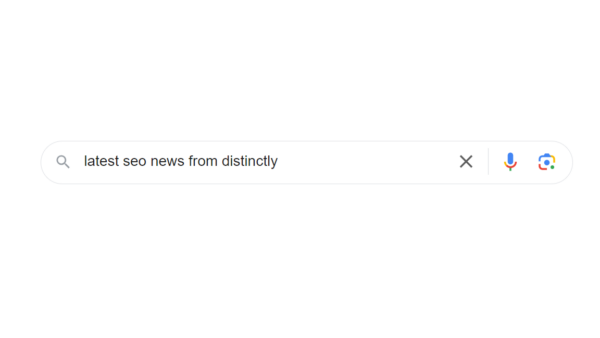The Overlooked Power of Combining Social Media and SEO
Around 5.24 billion people currently use social media worldwide, with the average social media user engaging with roughly 6 different social media platforms. Put simply, those numbers represent the chance to get your brand in front of a huge audience.
Whilst many businesses include both SEO and social media within their marketing strategies, the two are often dealt with as separate entities with little cohesion between them.
So, how do you integrate social media within SEO strategies? And, how can this improve your overall visibility, brand presence and conversion rate? Let’s find out.
Why is now the time to invest in social media marketing?
Social media marketing is nothing new. In fact, it first went mainstream back in 2006 when Facebook Ads launched. But in recent years, social media usage has exploded, meaning that the audience that each platform serves has seen huge growth in numbers.
Changes in social media usage
In a study by HubSpot, 42% strongly agreed that they now prefer finding brands on social media, rather than traditional search engines. 82% said they’d choose social media over a brand’s website, and 84% said the same compared to third-party sites like Amazon.
The figures are striking, and it really makes one point clear: social media is no longer just a place to connect with friends. It’s a place for brand discovery, for use as a search engine, to engage with customers, share targeted content and build social proof. The benefits of social media are endless for brands that want to increase their visibility.
Diversified Buyer Journeys
Five years ago, Google dominated marketing investments with its organic and paid channels as the starting point for conversion journeys. Now, Google isn’t the only platform used for searches, and websites aren’t the only place to make online purchases.
Today, platforms like TikTok, Instagram, YouTube, and podcasts are equally critical in influencing purchasing decisions.
The customer journey often looks more like the example shared by Rand Fishkin. Users often begin their journey within the ‘consume’ stage, browsing social media, utilising LLMs, and engaging with podcasts and newsletters. Search engines, such as Google, can then be used as a secondary step for navigational purposes.
Let’s say, for example, someone stumbles across a TikTok video about a holiday park in the New Forest. They think it looks great, give it a like and save it for later.
With the name of the holiday park in mind, they move to Google to carry out research, e.g. the holiday park website itself, review sites, Google My Business profiles, Reddit forums and comparison blogs. Users like to do their due diligence and often won’t make the purchase until they’ve covered a number of bases.
The need for stronger brand and E-E-A-T signals
AI-driven platforms, such as ChatGPT, use brand signals to influence visibility, which can be influenced via the effective use of social media and digital PR.
For instance, if you were to ask “Who are the best UK holiday park companies?”, an AI platform might look at social sentiment by aggregating reviews, mentions, hashtags and engagement metrics across platforms.
Models like ChatGPT are trained on a diverse dataset that can include excerpts or patterns from social media.
We asked ChatGPT for a list of the best UK holiday park companies and then asked what information/criteria it used to curate that list, as shown in the image below.
But it’s not just brand signals that are important. Social media presence also significantly contributes to your brand’s Expertise, Experience, Authoritativeness, and Trustworthiness (E-E-A-T).
E-E-A-T is a set of quality guidelines that Google uses to evaluate the overall credibility of content and websites. A strong social media presence indirectly supports E-E-A-T signals by:
- Increasing your brand’s exposure, helping your brand become viewed as authoritative and credible
- Building social proof through user engagement
- Reinforcing your position as an expert in your field through the sharing of valuable insights
- Showcasing collaboration with industry experts or influencers
- Amplifying your online footprint through frequent and positive brand mentions, along with how you respond to negative feedback too
Be where your customers are
The more touchpoints you cover, the better chances of reaching your target audience and driving potential conversions.
The demographics are different for each social media platform, so it’s worth identifying who your ideal social media customers are. For example, Facebook is still most popular amongst the 25-34 age group, whereas the 18-24 age group makes up the largest share on Instagram.
If your audience is active on Instagram but you’re not, you’re missing out.
SparkToro is a great tool for identifying how likely your audience is to use each social media platform. You can get this information per website and per keyword. Below is an example of SparkToro’s audience analysis tool.
How can you include social media marketing within your SEO strategy?
If you already have an organic SEO strategy in place, now is the time to integrate social media within it. The two don’t have to be separate counterparts, they can work together in unison to amplify your results.
Take your keyword research one step further
Keyword research typically involves using a tool, such as Ahrefs, to identify how many people search for a term using traditional search engines. But that shouldn’t be where the research ends.
Do those keywords have volume on YouTube, indicating that the content could be served within a video format? Do the keywords have volume on TikTok? Perhaps the topic itself has recently been trending?
Our recent proprietary data showed that from a 90,000 keyword sample, video was being shown on page 1 as a search result feature 8% of the time. This is a clear opportunity to build your search real estate and meet the intent of your customers.
Not all content is best served as a service page or blog post. Around 78% of people prefer to learn about a new product or service via short video content.
Optimise your social media profiles, not just your website
If you’re optimising your website based on keyword research, showcasing E-E-A-T and meeting user needs, why not apply these same steps to your social media profiles too?
- Optimise profile bios/company descriptions to introduce your brand and highlight key USPs
- Create posts around awards and achievements to build a sense of trust
- Complete keyword/trend research to identify topics you should be posting about or seasonal events you could be utilising
- Create a comprehensive content strategy that includes both blog content and social media content (focusing on various content formats)
- Complete competitor research to understand what’s working well for your competitors
- Carry out user research to delve into the minds of your target users and create content that they’re likely to engage with
Amplify existing website content
Content & brand amplification is a critical driver of SEO success in 2025.
The stronger your brand presence is, the more visibility you’ll have. And the more visibility you have, the more engagement and conversions will increase.
After all, you can’t assume that people are going to go out of their way to find out about how great you are; this is something you need to ‘subtly’ shout about.
Social media platforms are an effective way to strategically amplify:
- Content you have uploaded to your website
- Client reviews & testimonials
- Brand coverage & thought leadership
- The story behind your brand/your people-first presence
This is an approach we took for one of our clients, operating within the executive search space, who wanted to maximise their visibility on LinkedIn. After completing a LinkedIn audit, we identified opportunities to share blogs, post thought leadership content, upload eye-catching client testimonials and build up a stronger brand presence.
As a result of this new and improved LinkedIn strategy, in 2024, LinkedIn led to 686 conversions on the website itself, a 153% year-on-year increase. Plus, we’re now reaching over 10,000 impressions on some of our posts.
Complete a comprehensive social media audit
Here at Distinctly, we offer comprehensive social media audits to identify opportunities to improve your social media presence, giving you a data-backed strategy to work from. These audits are a great way to understand how you can align your social media efforts with your wider organic SEO strategy.
Through in-depth research and analysis, our social media audits include:
- Audience and demographic research
- Current state of performance audit
- Competitor analysis
- Broader industry, keyword and trend analysis
- Social listening and forum scraping
- Opportunities for growth
- Quick wins vs longer-term objectives
- Aligning social media with organic efforts
Social media and SEO don’t belong in silos. Together, they create a powerful ecosystem that drives discovery, builds trust and generates conversions. By aligning your strategies, you’ll meet your audience where they are and lead them exactly where you want them to go. Not all customer journeys start on Google. Make sure you’re covering every touchpoint.



